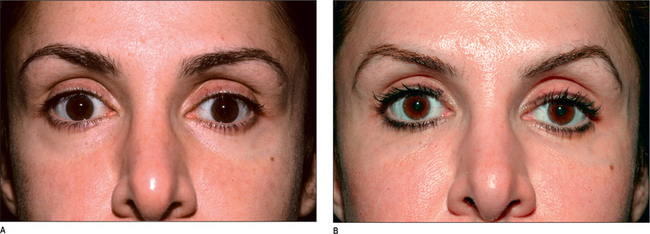Chapter 15 Augmentation of Facial Structures with Autologous Fat
Introduction
With renewed interest in volumetric enhancement for facial rejuvenation, fat grafting is once again gaining popularity. It has been used successfully for soft tissue augmentation since 18931 and in 1909 Eugene Hollander described a technique to transplant fat using a needle and syringe.2 In 1926 Miller claimed that grafting fat through hollow metal cannulas gave a more natural and longer lasting correction than paraffin.3 Soon after the introduction of suction curettage of body fat for contouring, Teimourian and Illouz described the injection of semi-liquid fat into liposuction deformities4,5 and Chajchir described injecting suctioned fat into the face.6 Although some of the initial results were positive7,8 many were not.9,10 Illouz compared the longevity of grafted fat in the face to that of collagen.4 In the 1980s, many well-respected plastic surgeons denounced fat grafting based on negative results.11,12 As techniques changed, more positive results were obtained and surgeons began to realize that grafted fat could result in long-lasting contour changes.13–16 The technique developed by Coleman began in 1987 and evolved over the next few years to become a standard for fat grafting. It emphasizes basic sound surgical techniques with the gentle handling of tissues to make fat grafting predictable and reliable.
Indications and Contraindications
Fat Grafting For Facial Rejuvenation
The cheek is a relatively easy area to visualize in three dimensions. The immediate, intraoperative results of cheek augmentation with fat are the most similar to what will be seen as the final result.17 This is a good area to begin learning and practicing making three-dimensional changes in the face. On the other hand, the lower eyelid is one of the most difficult areas for structural fat grafting. Irregularities, lumps, and excess fat can easily be seen through the thin eyelid skin when the swelling resolves. The lower eyelid should be approached with caution and only after gaining confidence in other more forgiving areas of the face.
The lower lip has a slightly protuberant rim, which is less distinctive than the white roll of the upper lip. The fullness and depressions of an attractive lower lip are opposite to those of the upper lip, with a central cleft and more fullness laterally. The amount of vermilion visible is much greater in the lower lip than in the upper lip (Fig. 15.1).18,19
Fat Grafting for Change in Facial Proportion
Augmentation of the chin is accomplished by first placing fat over the entire anterior prominence of the mandible.20 The shape of the chin is then sculpted by placing additional fat in two small balls, leaving a slight central cleft between them. This creates not only a more prominent chin, but also a shapelier chin.
Stay updated, free articles. Join our Telegram channel

Full access? Get Clinical Tree









